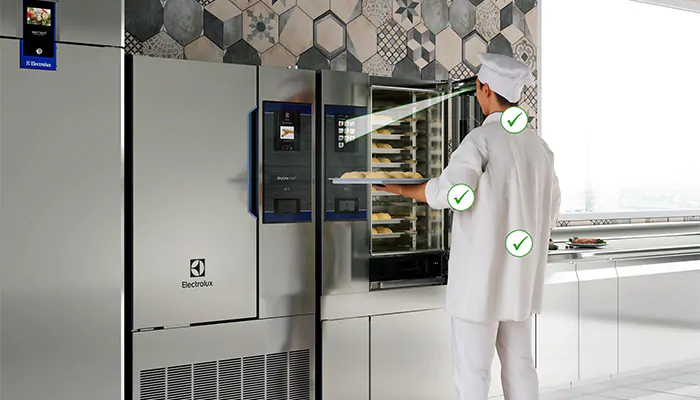Ergonomic kitchen design is sometimes overlooked when planning a new commercial kitchen or choosing kitchen appliances. When it comes to deciding what to buy in the commercial or industrial fields, high-end features are often considered in terms of price rather than as a performance booster. Is this true? Should ergonomic kitchen design become a focal point in the buying process?
“Efficiency” and “profitability” are almost one and the same in a commercial kitchen, thus meaning that profits can be increased when the ergonomics of a kitchen appliance or a kitchen workflow are well planned.
The best way to consider this issue is to list what ways an ergonomic approach boosts profitability, to make evaluation easier.
Ergonomics can create profitability by
- Reducing running costs
- Increasing productivity
- Reducing errors, risk and waste
- Reducing workflow downtime caused by injuries and sick leave
Before choosing a new appliance, it’s a good idea to do some number crunching and work out the savings and/or reduced risk connected with the appliance’s ergonomics. This allows for a comparison between the premium asking price and the expected increase in profitability. It is important to consider that increase for the whole projected life of the appliance itself: you pay for the appliance once but you use the machine for a long time.
Ergonomic kitchen design can help save time
Ergonomic kitchen design or ergonomically-designed kitchen appliances can provide new ways to do the same things, which allows new routines to be inserted into the existing kitchen workflow. These appliances can make a given task easier and/or faster to perform, thus reducing the time and/or level of expertise needed to operate it.

Ergonomic kitchen design can help reduce errors, risk and waste
Within an ergonomically-designed commercial kitchen, appliances are programmable or remote-controlled, helping you reduce errors, risk and waste.
This has 2 main impacts on profitability:
- Sensors, signals and programs streamline processes and even exchanges between appliances
- The need for monitoring is optimized.
Ergonomic kitchen design can help reduce operating costs
Ergonomic kitchen design strictly relates to the usability of machine interfaces. Intuitive human-machine interaction and implementation allow a shorter learning curve, so more people can learn how to use it. The consequence is an overall reduction of labor (i.e. preparation time, staff optimization, output per time unit).
Ergonomic kitchen design can help reduce workflow downtime
Ergonomics boosts profitability because it impacts all the aspects of a commercial kitchen, i.e. the very way kitchen staff operate, move and interact with the whole set of appliances, and with each other. It helps increase the quality of workflows and work life, preventing and reducing injuries and sick leaves.